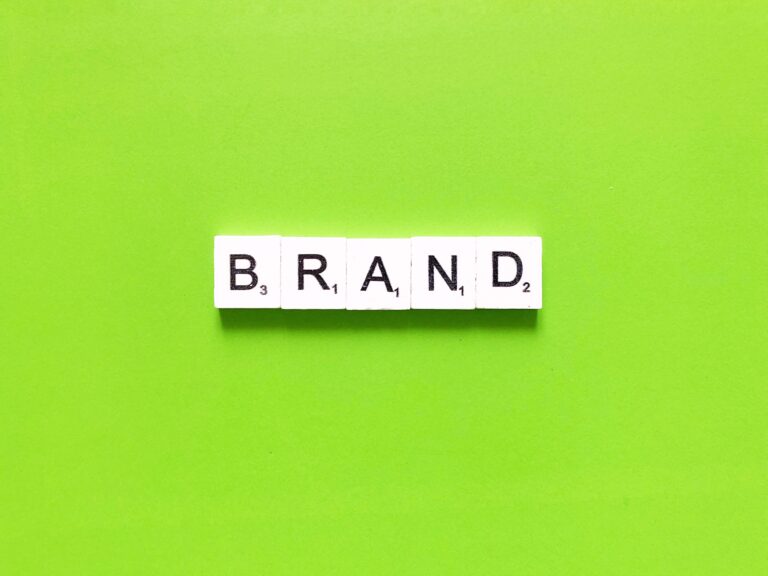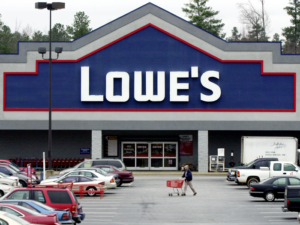“Brand touchpoints are a crucial part of any brand strategy because they allow brands to communicate with their consumers in a variety of different ways.”
Brand touchpoints is a term used to describe how a brand connects with its customers. Brand touchpoints can be physical, digital, or emotional. Business owners and marketing teams often overlook these points, but they play an integral role in the success of your brand. This article will discuss what these concepts mean and how you can use them to increase your conversion rates!
Jump Ahead To :
What are Brand Touchpoints?

In Branding, Brand touchpoints are any point of contact between the consumer and the brand. These can be anything from direct interactions with employees or online to media exposure through advertisements or social media posts. Branders use this data (both qualitative and quantitative) to gauge how successful their strategies have been at reaching consumers and what they like about your business to improve it for future campaigns.
For example, if you were designing a campaign that involved billboards around town, but after seeing that people don’t respond very positively towards those ads (specifically), you may want to choose different creative content next time – maybe focus on something more educational? Or even opt-out of traditional advertising altogether by choosing an alternative strategy such as influencer marketing. Brand touchpoints are crucial in the branding process, allowing you to understand what consumers think of your business and how they interact with it.
Examples of Brand Touchpoints

Apple’s logo is an example of a brand touchpoint that creates an image in the minds of customers and helps differentiate itself from competitors such as Samsung or Microsoft, who do not use logos on their device screen.
The colour red used by Mercedes-Benz is another example of including a unique identity for the car manufacturer, which clearly distinguishes it from others like Audi and BMW, who both have different colours associated with their brands.
The Examples of Brand touchpoints are very important. For example, the smell can affect your brand experience. “People don’t use their computers to smell flowers”, so smells have a big impact on what you think about different brands or products.
The next example is colour because it has been shown how colour affects people’s moods and emotions, which also plays a role in branding experiences. For example, suppose you go into any Apple store. In that case, it’s usually quite dark with some light colours like white or grey. This creates a unique environment where customers feel they belong there and connect to the company more than other companies who want them to be excited about new technology instead of making them calm down and feel safe.
Another example of touchpoints is sound because it has been shown how the music in a store or restaurant can affect people’s moods and feelings about brands.
For example, if you go to McDonald’s, it’s usually quite loud with some fast food tunes. This atmosphere makes customers relaxed, but when they are eating their burgers, they start to think that maybe what your eating isn’t good for them even though deep down inside we all know that their Big Mac taste amazing!
When the iPhone was first released, the manufacturers knew that it had an extremely simple design. The touch interface for this phone needed to be easy enough that even a child could easily figure it out without having any prior experience with other phones on the market at the time.
Examples of Brand touchpoints are what you would expect from your customer base and customers in general. If they need something simple, make them feel like they are dealing with professionals by giving them what they want and making sure you give off a very professional image. Touchpoints include everything related to your brand, including logos, colours used on packaging or online presence etc.
Steps to enhancing your brand’s experience

The steps to enhancing your brand experience are simple. First, you need to know what makes your business unique and different from others in the same industry or niche. Second, be sure to provide value by making products easier for people to use while adding new features that solve problems they didn’t even realize existed before using them. Lastly, focus on building relationships with customers through social media channels like Twitter and Facebook, where users can interact directly with you about their product experiences.
- Be sure customer service policies match reality – make promises only when comfortable keeping them; set clear guidelines for returns/exchanges etc.
- Add some sort of “wow” factor into each product.
- Don’t rely too much on social media, but do use it to engage with customers about their experience; answer questions/comments promptly and be sure not to overdo it post only when necessary (at least once per day)
- When possible, send out free or discounted products for reviews before actually selling them
- Add features that solve problems your client may have never even realized existed until they used the product. For example, Amazon’s Kindle has an excellent battery life because it optimized it based on users’ habits by tracking how often certain pages are read. This cut down on power consumption tremendously while still offering all the functionality they wanted in their product.
What is a Brand Touchpoint Wheel?
A brand touchpoint wheel is a tool that helps you to identify and rethink your brand’s presence in the market. Brand Touchpoint Wheel was created by Peredur ap Gwynedd, who wanted marketers to be aware of how their brands are reaching out to the customers – both online and offline- and what kind of mediums they use for each service/product etc.
Therefore Brand Touchpoint Wheel paints a good picture of where your company stands within the customer experience world. It also shows if companies have recognized all possible ways people can interact with their products or services. This, in turn, brings additional business opportunities like new channels (e-mails), social media platforms (Twitter) or other sources, e.g., news articles or reviews on sites like Trip Advisor.
Brand touchpoint wheel is a useful tool for all marketers and serves as an eye-opener for companies who don’t seem to be aware of the whole picture!
Benefits Of The Brand Touchpoint Wheel Tool

A brand touchpoint wheel is a great way to represent all of the different ways you can reach your customers. Brand touchpoints are when people interact with your business, such as advertising and customer service. The benefits of using this tool include:
– Helps employees understand how to communicate across multiple channels
– Increases marketing efficiency by directing resources toward key points in the purchase process where they will have maximum impact and minimum time and money investment
– Makes collaboration easier between departments within an organization that work together on one product or campaign.
A common example of Brand touchpoints includes logos and colours, but Brand touchpoint wheels go further by capturing all elements that make up the brand’s tone. The main benefit is capturing all aspects, so nothing is missed during planning sessions or when making channels. Another important aspect of the Brand touchpoint wheel is it’s easy for everyone involved in marketing efforts to understand rapidly. This saves time and money on training costs and allows different departments such as sales and client services to be more effective with communicating what your company stands for quickly and effectively. Overall, Brand Touch Point Wheels help companies save both Time and Money!
Cycles of Brand Touchpoints

What is the Different cycle of brand touchpoints? When you think about it, the answer is pretty simple. A large part of your day revolves around brands, even if you don’t realize they affect you in some way. In modern capitalist society, we’re surrounded by companies trying to sell us something, and most times, they succeed because their timing was right or what they were offering seemed like a good deal at the time.
Brands have become so influential that many people can trace significant milestones in their lives back to where they bought certain items, such as our first car, our college graduation gift, etc. Each one of these experiences marks an important point on your journey as a customer, which all leads up to today’s brand-driven world.
The Cycle of Brand Touchpoints is a model developed by the Boston consultancy Lippincott Mercer to help clients understand what brands are trying to achieve with you and how they go about achieving it. The cycle helps companies understand where in this journey their customers are so that they can identify ways of connecting with them more effectively through marketing, which will ultimately lead to increased sales for everyone involved. So, let’s take a look at each stage on this journey together.
This very first point marks when your company learns who its customers are – usually after some form of research has been carried out either internally or externally, e.g. surveys, lifestyle questionnaires etc. You’d be surprised just how much information an effective survey can yield and how much it can help your company. This information is vital for the next step in the Cycle Of Brand Touchpoints, which we’ll talk about a little later on.
The second part of this cycle occurs when you’re trying to get people’s attention. About halfway through week one, companies will realize that they need an effective marketing strategy if their business has any chance of succeeding, so that means either good advertising or just good old word-of-mouth from happy customers! It doesn’t matter what form of communication brands use as long as they’ve got something worth saying and it isn’t all overbearing 🙂
At some point, while exploring different options, your brand will have come up with some ideas for reaching out to customers, so now it’s time to decide which one you’re going with.
This is where all your hard work pays off! Brands that have successfully impacted customers are likely to get the results they want, whether that means making a sale or just getting someone’s attention. It doesn’t matter what stage of the Cycle Of Brand Touchpoints consumers find themselves in because this final step will always provide them with some form of benefit, allowing brands to maintain their relationship for as long as possible without too much difficulty.
The Cycle Of Brand Touchpoints shows us how different companies interact with various people over time and helps develop an effective marketing strategy by ensuring the right timing, message delivery etc. The Cycle Of Brand Touchpoints could be classified into four categories; awareness, consideration, preference and loyalty.
The Awareness Cycle of brand touchpoints is the first stage of the consumer’s journey. It represents how they become aware of different brands available in their category (e.g. Converse shoes) through advertisements, celebrity endorsement etc. At this point, it doesn’t matter which company you ultimately choose to buy from because your level of interest will be low at best.
Consideration Cycle Of Brand Touchpoints is when consumers start looking for more information on products/brands that are most relevant to them. They compare options to make a purchase decision based on either online or offline research methods such as visiting stores, reading reviews etc. Most often, consumers use a shortlisting technique to come up with a list of brands/products they like and plan to do more in-depth research for the best one.
Preference Cycle Of Brand Touchpoints is when consumers make their final purchase decision, whether online or offline. It doesn’t matter which company wins this battle because most people don’t change their minds after making an initial buy. At this point, you are likely to be satisfied with your purchase but not necessarily loyal.
Loyalty Cycle Of brand touchpoints represents different ways companies can keep customers engaged by providing them access to exclusive offers depending on how much revenue each customer generates over time etc. Brands will always try to increase average purchases per person and lifetime value (how many years that person stays being a customer).
Conclusion
Brand touchpoints are the only way to make a lasting impression on potential customers, but they can be difficult to measure. The best thing you can do is start with your brand and think about how it intersects with these contact points. What kind of interactions have you had, or what posts have you made that will help build up impressions for your company? How does this new perspective change the way you will approach marketing strategies in the future?






